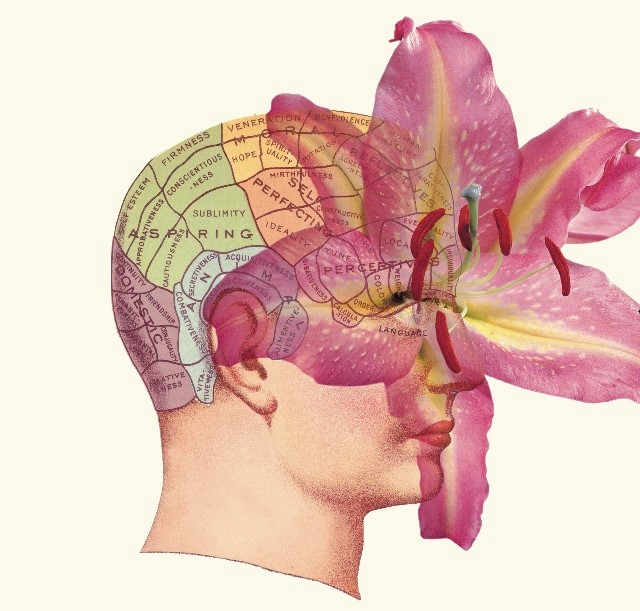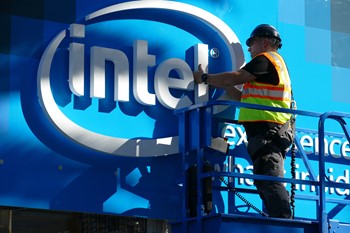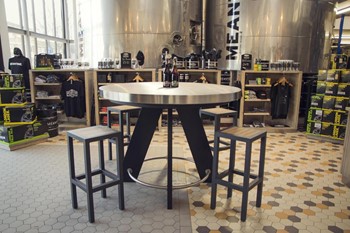Diving into sensory experience

To create a more emotional connection with their stakeholders, brands are turning to sensorial, immersive experiences. How can companies take advantage of their stories and assets in order to enhance their brand experiences? Amy Sandys reports
The Philippine tarsier, or Tarsius syrichta, is one of the smallest known primates to inhabit the earth. Found in the lush rainforest habitats of the Philippine islands of Samar, Leyte, Bohol and Mindanao, the Philippine tarsier is thought to have the biggest eyes, relative to its overall body size, of any animal, giving it excellent night vision. The tarsier is also widely regarded by ecologists for its hearing, with its enlarged auditory cortex allowing the animal to recognise even the slightest sounds. In humans, the auditory cortex – or part of the frontal lobe in the brain which processes auditory information – performs much the same function, in allowing us to recognise and understand information fed verbally.
However, unlike the Philippine tarsier, humans do not, for the most part, require their auditory cortex for navigation through the tall grasses and bamboo shoots of Samar, Leyte, Bohol and Mindanao. From urban jungles to rural landscapes, the auditory cortex performs just one function in a nerve system of many which allows humans to navigate the plethora of sights, smells, sounds and tastes with which they are bombarded on a daily basis.
For branding professionals and marketers, developing a product which appeals to just one human sense has unntapped neurological potential.
To take advantage of this, many brands are turning to immersive or sensory-based experiences to connect more strongly with their customers or stakeholders. There is an increasing need for brands to get their audiences to interact and engage with their stories, says Sam Taylor, head of client services and business development at creative technology-led branding agency, Kerve. “If you’re just talking at customers, it’s very easy for them to tune out,” says Taylor. “But, if you get them actively involved with the brand and taking part, then they’re much more likely to carry on taking part and carrying on the conversation and discovering more about the brand.”
For Kerve, this is nowhere so clear as through its alcohol brand campaigns. Factors such as a reduction in the amount people drink, a wider variety of higher quality products now available and a craft beer market almost at saturation sees alcohol brands develop techniques previously unseen to attract and retain its consumer base. Yet, the UK has more craft beer distilleries per capita than any other country in the world. This fascination with the brand and it’s heritage, says Taylor, means craft beer brewers, such as Meantime Brewing Company in Greenwich, London – now owned by Asahi Breweries – are nding more innovative approaches to brand. Taylor says, “We worked with Meantime for five years and they wanted to do a virtual reality (VR) experience – so tours of its brewery made sense. They wanted to give a bit of that education, a bit of that experience to people outside of London, and the best way to do that was through a VR experience.”
For Meantime, Taylor says, the esteem with which the brewery holds its brewing process was compatible with the development of an experience whereby the audience can get into the brand’s heart. “The primary thing was getting the consumers to understand what makes Meantime different as a brewery,” says Taylor. “That is the extra time Meantime takes in that brewing process, but also people who are into their craft beer were more interested in how the beer was brewed and what the ingredients are – so the brewery was trying to teach them a bit more about that as well. It’s about teaching people what Meantime’s heritage is. They have been one of the innovators, and still are one of the innovators.” As well as ensuring Meantime’s particular brand of craft brew stands out among its competitors, the VR experience developed by Kerve saw the brewery’s history come to the front and centre of its brand strategy. For the beer’s target audience, Meantime’s taste and history have developed a visceral link. The company’s passion for the brewing process helps raise its brand equity, via an exploration of the beer’s lifecycle in VR.

“Instead of a large room filled with cars, we now have a museum that offers much more of a sensory experience – that takes people on a logical journey through the plant’s history, the brand’s heritage and the processes behind building a Mini”
Using immersive experiences to create a brand narrative is not only connected to alcohol brands, however. For the Mini Plant Oxford, home to the world’s biggest showcase of Oxford’s native Mini cars, a changing audience and diversity of interests highlighted the need for it to develop an engaging, sensory experience which captures Mini’s extensive history. Yet, says Dani Batty, creative director at the internal communications and employee engagement agency behind the Mini Plant Oxford, We Are Vista, it was equally as important that the brand found ways to appeal to an audience which has, over the years, come to encompass all generations.
Much like Meantime’s VR experience, multisensory exploration allowed Mini’s customers to put themselves at the heart of the brand. Batty adds, “Even down to the smell of the new cars and the old cars, it’s really multisensory, it’s a really 360-degree experience. It touches on every single sense we have.” And, for Mini, this experience is heightened through the emotional connection its stakeholders have with the brand, and the company’s roots in the UK city of Oxford. As a heritage brand, Mini is deeply embedded not only in the lifestyle of its consumers but also in the reputation it offers to UK manufacturing and the car production industry overall. “Instead of a large room filled with cars, we now have a museum that offers much more of a sensory experience – that takes people on a logical journey through the plant’s history, the brand’s heritage and the processes behind building a Mini,” says Wrelton.
Using the sensory elements Mini has to offer, says Batty, meant that the whole spectrum of Mini enthusiasts and admirers were catered for. “Plant Oxford for many people is the spiritual home of Mini,” says Batty. “It’s just across the road from where the plant is now and it’s got a lot of meaning and the heritage, it runs really deep there. It’s massively important that we were prepared to take on the past but also that we looked forward as well, because looking at the exciting things that Mini is doing and the innovation and the things that they’re pushing for in the automotive space.”
Steve Wrelton, external communications manager at Mini Plant Oxford, agrees. “Mini is a modern, premium brand, but also one that is steeped in heritage,” says Wrelton. “The challenge for the exhibition was to create something which recognises that dynamic and is engaging to the range of visitors we have coming to see us.” And for We Are Vista, an exploration into the heritage and dynamism of the Mini brand meant engineering its various automotive components in a way which would appeal beyond the visual logo and branding. Batty says, “We played on many different senses – sight and sound, but also allowing people to get hands on. They could conjure their own Mini rendering and take part using an interactive green screen and put themselves in a Mini.”
Adding a sensory element to any company’s brand strategy widens the number of brand touchpoints through which audience interaction is possible. Wrelton says, “Audio and visual elements, social media touchpoints that encourage people to share their experience with us on Facebook or Instagram, all of these things have enhanced our offer as a visitor attraction right in the heart of a modern-day car plant.” Thus, extending the brand story beyond a logotype and typeface to a concept that involves physical interaction with or by the visitor or customer should be intrinsically connected to the brand messaging. If the language used reflects the experience offered, a brand’s reputation is more likely to grow and develop – particularly if its use of sensory messaging is unique or innovative.


Although the long-term effects of brand loyalty and emotional buy in have yet to effectively measured, Taylor says, anecdotal feedback and short-term uptake indicates the connections made through the multisensory experience is infallible. “If you can use those senses to give a person an enhanced experience, then that person’s going to walk away with the experience talking about it more and therefore feeling more positive about that brand,” he says. “The key is which brands can connect the experience back into their core message. Rather than being a novelty factor, people will think positively about the brand because it’s giving them a very positive experience. Tie the themes of that experience into the core associations of the brand; people will associate it, and also learn about it.”
In some cases, however, leading through a sense other than sight has been an integral part of the brand strategy since day one. For global technology company Intel, branding a firm which makes processors is a challenge. Every computer needs one, but, says Taylor, “Most people wouldn’t have a clue what an Intel processor does, but they all know the jingle. They’re not going to know any other processor brands, most customers, but they know Intel because of that sting that comes up in every computer advert.”
Colleen Fahey, managing director at the Chicago office of audio branding consultancy Sixième Son, says that for Intel, leading with an audio, rather than a visual, brand was down to a need for simplification and clarity of communication. “[Intel] wants to convey simplicity, it wants to remove the words from the tagline, and consequently it wants the music to say something about the brand,” says Fahey. For Intel, the move to audio saw it create a unique sound piece which is recognised far more widely than any visual campaign done by the company in its 20-year history. “This is a financial services company, but it wants to convey the idea of confidence and coaching, instead of being these fancy experts with the best technology – Intel is trying to say ‘We’ll fit into your life,’” says Fahey. “And Intel is proposing to do it with music, so there is another industry trying to take some of the visual clutter, take away some of the talk and substitute a more semiotic, more symbolic way of talking about the brand.”
For Intel, stripping the brand back to its basic elements allowed the company to aurally communicate its brand offering to an audience which, arguably, may have been alienated by a brand campaign based on the function of a processor. Indeed, says Fahey, focusing on one sense can set the brand apart from the multiple messages being directed at consumers each day. “I think [stripping] it down to basics is more appealing for the audience, because audiences are so deluged with promotional material from companies, with words, with pictures, with offers,” Fahey says.
“Sometimes if you can see it and kind of subtly get it, it’s more like a friend talking to you.” With personalisation behind the next strategic step for many brands, moving toward sensory experience presents consumers with double the insight into what drives and decides a brand’s true values. And, says Batty, playing on emotion means a more personal approach works with heritage brands, too. “Multisensory taps into the head and heart. You don’t just buy in on a mental level, you buy in on an emotional level as well, which is something we were quite passionate about doing.”
And while human senses may be less tuned to their habitat than the Philippine tarsier, whose nervous system has adapted to deal with its challenging rainforest environment, the need for bolder statements and emotional buy-in further drives the relationship between customer and brand. “When we talk about experience we talk about something that you buy into on different levels,” says Batty. “You don’t just stand and be quite passive and look at something, you actually engage in something.” Such engagement will drive the next iteration of brand experience; with more companies investing time and money into developing immersive and encompassing brand touchpoints. Those that do not innovate could be at risk of being left behind. “If you use the senses, you can play on your system memory and these links to association while delivering these stories,” says Taylor. “You create differentiation and a deeper connection – an altogether stronger association with the brand.”
For more from Transform magazine, follow us on Twitter @Transformsays












